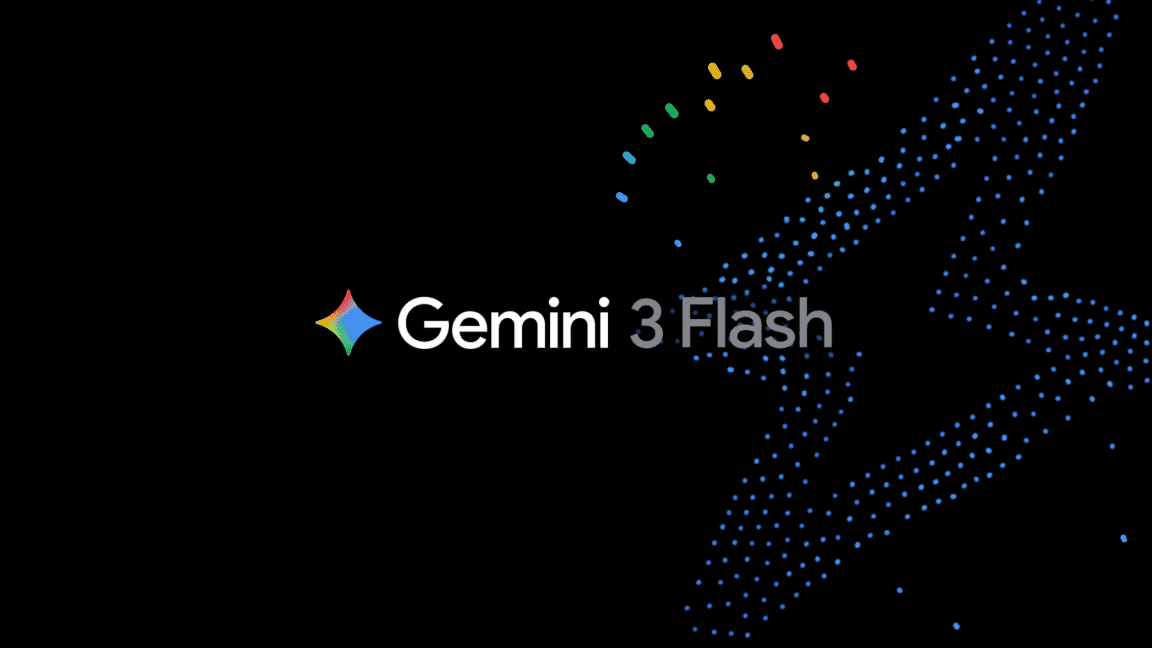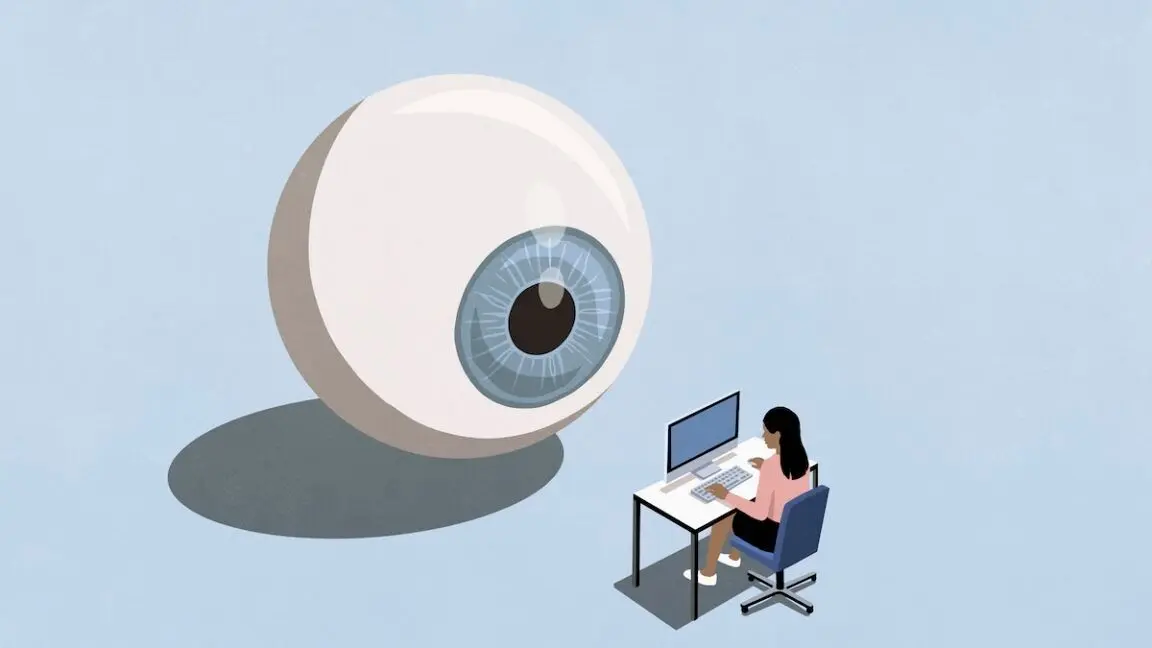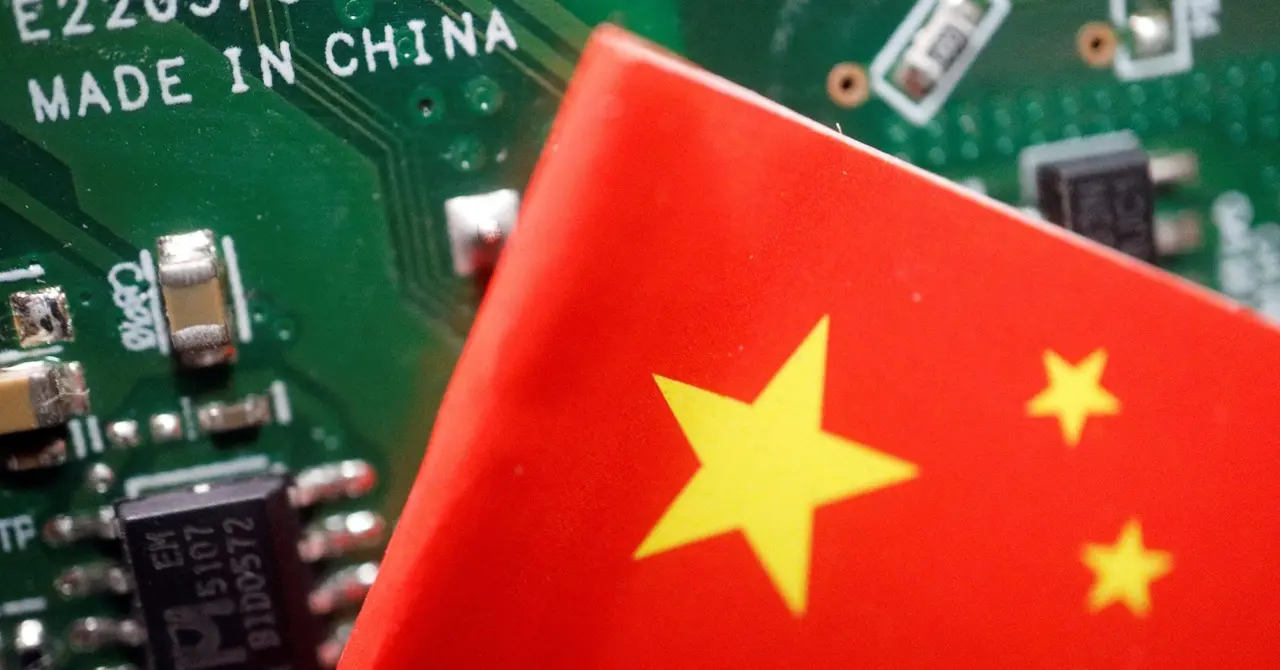Nvidia Sets Sights on Robotics Market with Upcoming Jetson Thor Launch
10 Sources
10 Sources
[1]
How Nvidia's Focus on Robotics will Drive its Growth
Unlocking the future: The launch of Nvidia's Jetson Thor is bringing in an era of robotics revolution Nvidia, one of the global semiconductor and AI chipmakers, is planning to make a strategic foray into the still-growing world of robotics. This will help the company promote diversification in its functions from purely being an AI chip manufacturer. Such a move unlocks tremendous growth avenues for Nvidia. This sudden foray is due to increasing competition in the AI market. Nvidia is facing tough competition from companies such as and Intel. However, launching new products like Jetson Thor and embodied AI will help the company maintain its lead in the AI market.
[2]
Jetson Thor: Nvidia's Next Leap in AI-Driven Robotics
By entering this space, Nvidia aims to capture a substantial share of this emerging market. The company's expertise in AI and chip design gives it a competitive advantage, enabling it to develop solutions tailored to the unique demands of robotics. While Nvidia's foray into robotics holds great promise, it is not without challenges. The robotics industry is still in its nascent stages, with adoption hindered by high costs and technical complexity. Nvidia will need to address these barriers by making its solutions more accessible and affordable to a broader audience. Additionally, the company faces competition from other tech giants, including Alphabet, Amazon, and Tesla, which are also investing heavily in robotics and AI. Staying ahead will require continuous innovation and strategic partnerships to maintain its leadership position. Despite these challenges, Nvidia's track record of successfully entering and dominating new markets inspires confidence. The company's focus on robotics, combined with its commitment to AI advancements, positions it well to capitalize on this emerging trend. Nvidia's launch of Jetson Thor signals a bold step into the future of robotics. By leveraging its expertise in AI and chip manufacturing, the company aims to lead the robotics revolution, offering solutions that redefine how industries operate. As the world moves toward greater automation, Nvidia's vision and innovation could make it a cornerstone of the robotics era. With the robotics market poised for rapid growth, Jetson Thor represents a pivotal moment for Nvidia as it seeks to expand its influence and drive the next wave of technological transformation.
[3]
Top Tech News: Nvidia Eyes Robotics Amid AI Chip Competition; Funding and IPOs: Startups Aim Big for 2025
Here's a quick rundown of the biggest tech headlines making waves today. From the Nvidia Eyes Robotics Amid AI Chip to Qualcomm Opportunities, let's dive into the top tech stories of the day. Nvidia is focusing on robotics as a key growth area amid intensifying competition in AI chips from AMD and cloud giants like Amazon and Google. The company plans to launch Jetson Thor, its next-gen compact computer for humanoid robots, in 2025. Nvidia VP Deepu Talla highlighted breakthroughs like generative AI and simulated environments driving robotics innovation. Despite challenges in scaling and cost, Nvidia offers end-to-end robotics solutions, from AI training software to chips. Robotics currently contributes minimally to revenue, dominated by AI data center sales. Nvidia's valuation exceeds $3tn, buoyed by strong AI chip demand and investments in robotics ventures.
[4]
Nvidia believes the robotics market is about to explode, just like ChatGPT
Forward-looking: Nvidia, now a $3 trillion+ titan, has grown synonymous with graphics cards and AI accelerators. But as the company has become the one to beat in these arenas, it now has its crosshairs aimed at what it sees as the next major growth area: robotics. A report by The Financial Times has revealed Nvidia's plans to achieve this future. It highlights how Deepu Talla, Nvidia's VP of robotics, believes the robotics market has reached an inflection point where physical AI and robotics are about to take off in a big way. "The ChatGPT moment for physical AI and robotics is just around the corner," Talla told the publication, adding that he believes the market has reached a "tipping point." To capitalize on this, Nvidia wants to position itself as the go-to platform for robotics. The company already offers a full robotics stack. This includes the software for training foundational AI models on DGX systems, its Omniverse simulation platform, and the Jetson hardware. However, things are set to accelerate next year, with Nvidia planning to launch its latest robot brain called Jetson Thor. This will be the newest addition to the company's Jetson platform, which is a line of compact computers designed for AI applications. Jetson Thor will be a model focused specifically on robotics, though. Talla says that there are currently two key breakthroughs driving Nvidia's robotics optimism. First is the rise of powerful generative AI models. The second is the ability to train robots in these foundational models using simulated environments. He stated that in the past year alone, this 'sim-to-real gap' has progressed enough to enable the combination of simulations with generative AI in powerful new ways that were not feasible two years ago. It's worth mentioning here that Talla has played an instrumental role in helping Nvidia break into robotics. The roots trace back to 2013 when Talla joined to work on its Tegra mobile chip. The company pivoted those engineers to autonomous vehicle training, which eventually led to the 2014 launch of Jetson robot brain modules. As for where the Jetson Thor will be useful, we can take hints from Nvidia's recent investments. Earlier this year, the buzzy robotics startup Figure AI raised $675 million from investors including Nvidia, Jeff Bezos, Microsoft, and OpenAI. Apptronik, another robotics company using Nvidia's tech, recently partnered with Google's DeepMind subsidiary. The robotics push comes as Nvidia faces increasing competition in AI chips from the likes of AMD. While AI still accounts for a massive 88% of Nvidia's $35 billion in quarterly revenue, the company is wise to explore new frontiers. After all, the robotics market is projected to soar from $78 billion currently to $165 billion by the end of 2029, per BCC Research.
[5]
Nvidia Targets Robotics as Next Big Opportunity Amid Rising AI Rivalry - NVIDIA (NASDAQ:NVDA)
Nvidia to launch Jetson Thor computers for humanoid robots in 2025. Nvidia Corp NVDA is eying robotics as its next growth catalyst as it battles intense rivalry in its artificial intelligence chipmaking business from Advanced Micro Devices, Inc AMD. Also, core Big Tech giants, including Amazon.Com Inc. AMZN, are competing in a space that aims to reduce their dependence on the chip designer by producing their own inbuilt chips. Nvidia's valuation breached the $3 trillion mark, rubbing shoulders with Apple Inc AAPL, backed by the AI frenzy. It has become a 'physical AI' investor by backing humanoid robotics companies like Figure AI. Also Read: Elon Musk Reveals Toughest Part Of Building Tesla's Humanoid Robot: 'Improving The Design Of Optimus For Ease Of Manufacturing Robotics company Apptronik, a Nvidia client, also tapped Alphabet Inc GOOG GOOGL Google DeepMind, underscoring the growing interest in robotics. Nvidia will showcase its advanced technology compact computers for humanoid robots known as Jetson Thor in the first half of 2025. Nvidia's vice president of robotics told the Financial Times that "the ChatGPT moment for physical AI and robotics is around the corner," adding that the market has reached a "tipping point." Talla told the FT that the outburst of generative AI models and the ability to train robots leveraging simulated environments drove the robotics market shift. During Nvidia's annual conference in March, CEO Jensen Huang voiced allegiance to the robotics sector, revealing robots powered by Nvidia's chips. Unlike how Google supplies Android for smartphones, Nvidia intends to provide the underlying technology instead of building robots. The global robotics market is worth $78 billion with the potential to reach $165 billion by 2029, FT cites the BCC. Nvidia stock surged 185% year-to-date. Citi's Atif Malik expects Nvidia's profit margin to bottom out in the April 2025 quarter, with an upward trend expected thereafter as it addresses AI robotics demand in warehouses, manufacturing, and humanoid robot sectors. Morgan Stanley's Joseph Moore flagged AI PCs, autonomous vehicles, software, and robotics as potential revenue drivers for Nvidia. Investors can gain exposure to Nvidia through JPMorgan Nasdaq Equity Premium Income ETF JEPQ and Vanguard Total World Stock Index ETF VT. Price Action: NVDA stock is down 1.01% at $135.63 premarket at the last check Monday. Also Read: Chamath Palihapitiya On Joe Rogan's Podcast Envisions AI-Powered Law Enforcement Image via Shutterstock NVDANVIDIA Corp$134.90-1.54%Overview Rating:Good75%Technicals Analysis1000100Financials Analysis600100WatchlistOverviewAAPLApple Inc$253.00-1.01%AMDAdvanced Micro Devices Inc$124.37-0.66%AMZNAmazon.com Inc$221.51-1.00%GOOGAlphabet Inc$191.63-1.24%GOOGLAlphabet Inc$190.15-1.35%JEPQJPMorgan Nasdaq Equity Premium Income ETF$57.35-0.68%VTVanguard Total World Stock Index ETF$118.00-0.76%Market News and Data brought to you by Benzinga APIs
[6]
Nvidia's next move: powering humanoid robots | TechCrunch
The chipmaking giant Nvidia is leaning more heavily into robotics in 2025. More specifically, it's launching a new generation of compact computers for humanoid robots, called Jetson Thor, in the first half of the new year, confims the Financial Times. The move, which was expected, is part of an evolving, years-long strategy. Back in March, Nvidia CEO Jensen Huang showed off a range of robots powered by Nvidia's chips at the company's annual conference. Nvidia doesn't plan to compete directly with manufacturers like Tesla, but rather provide the "hundreds of thousands" of robot makers in the world with a kind of underlying OEM, as its vice president of robotics, Deepu Talla, told reporters last month in Tokyo. As for why now, Talla tells the FT that the shift owes to two technological breakthroughs: the explosion of generative AI models, and the ability to train robots on them using simulated environments. What Nvidia isn't saying but is also plainly the case: its push into AI-powered robots also comes as major customers like Amazon and Google work to lessen their dependence on the outfit's AI chips by developing their own.
[7]
Nvidia Focuses on Robots Amid Stiffer AI Chip Competition | PYMNTS.com
The $3.3 trillion company, whose tech has helped drive the rise of artificial intelligence (AI), will launch the next version of compact computers for humanoid robots -- dubbed Jetson Thor -- in the first half of next year, the Financial Times (FT) reported Sunday (Dec. 29). According to the report, Nvidia is jockeying to become the top platform in what it argues is a coming robotics boom. "The ChatGPT moment for physical AI and robotics is around the corner," Deepu Talla, Nvidia's vice president of robotics, told the FT, adding that he believes the market is at a "tipping point." The FT report noted that this effort comes as Nvidia is expecting more competition for its chips from rivals like AMD, as well as cloud computing titans like Google and Amazon. Now, the company is investing in the "physical AI" space to help the new robotics firms grow. For example, it joined Microsoft and OpenAI in a February funding round that valued humanoid robotics company Figure AI at $2.6 billion. While Nvidia does not break out figures for its robotics product sales, the FT report said that this part of its business represents a smaller share of its revenue. Data center revenue, for example, made up around 88% of the $35.1 billion in sales Nvidia reported in the third quarter. In other robotics/AI news, PYMNTS wrote recently about research at MIT that developed an AI system that could let warehouse robots deftly handle odd-shaped packages and navigate crowded spaces without putting human workers in danger. It's a breakthrough happening at a moment when retailers and logistics companies are facing increasing pressure to automate amid surging eCommerce demand. Although robots excel at repetitive tasks such as moving pallets, MIT's PRoC3S technology could finally solve the long-standing challenge of robots safely performing more complex warehouse jobs that usually require human dexterity and spatial awareness. "In theory, PRoC3S could reduce a robot's error rate by vetting its initial LLM-based assumptions against more specific and accurate understandings of the warehouse environment," Erik Nieves, CEO and co-founder at Plus One Robotics, told PYMNTS. "Think about it like this: A warehouse robot operating solely on LLM guidance has been described how to complete a task. The PRoC3S concept goes one step further by placing a digital robot in a simulated environment of that task. It's essentially the difference between classroom instruction and a really good field trip." As PYMNTS has reported, robotics and AI technologies are transforming traditional distribution yards via specialized autonomous vehicles outfitted with robotic arms that can handle complex tasks such as connecting brake lines and positioning trailers, operating alongside human workers.
[8]
NVIDIA To Reportedly Release "Jetson Thor" Computers By Next Year, Marking The Beginning Of "Robotic AI" Era
NVIDIA is set to accelerate its development of humanoid robots in the next year, as Team Green is preparing to release dedicated compact computers under the "Jetson Thor" series. When we talk about how AI is going to evolve from hereon, the one discussion in everyone's mind is automated robots, primarily since AGI has taken over the industry. Now, in a report by the Financial Times, it seems like the upcoming year will likely mark the next phase of the AI hype, where robotics will play a huge role in driving the markets further on. Team Green is rumored to introduce their next-gen "Jetson Thor" computing lineup in the first half of 2025, likely acting as a catalyst in the development of humanoid robots. Nvidia is betting on robotics as its next big growth driver, as the world's most valuable semiconductor company faces increasing competition in its core artificial intelligence chipmaking business. The US tech group, best known for the infrastructure that has underpinned the AI boom, is set to launch its latest generation of compact computers for humanoid robots -- dubbed Jetson Thor -- in the first half of 2025. - The Financial Times It is said that NVIDIA has already recognized humanoid robots as the next big thing in the markets, which is why the company is building an ecosystem around the segment, offering software and hardware expertise. With the advent of genAI, coupled with how model training has now evolved to be done in stimulated environments, such as with Project GR00T, it has created the perfect setup for robotic advancement, which is why companies assign revenue to grasp the hype. In terms of what NVIDIA offers to the robotics industry, it has immense expertise in model training, and with assets such as Omniverse and the Isacc software stack, the company can replicate virtual environments to allow real-time interaction with robotic devices. Now, with the necessary computing power onboard courtesy of "Jetson Thor," Team Green has filled out all pieces of the puzzle, which makes it one of the leading firms to capitalize on the "robotics" hype. The global robotics industry is expected to grow to a whopping $165 billion by the end of 2029, which is why it will play a massive role in how companies like NVIDIA evolve moving into the future.
[9]
Nvidia Said to Be Betting Big on Embodied AI and Robotics
The company is also reportedly planning to train robots in simulation Nvidia is reportedly shifting its focus from artificial intelligence (AI) chipsets to robotics and embodied AI. The Santa Clara-based tech giant is said to be looking to provide processing capabilities and training for robots due to the rising competition in the AI hardware space. Notably, an Nvidia executive recently highlighted the company's plans to start training AI agents in simulation to prepare them for real-world scenarios. Additionally, earlier this year, the tech giant unveiled an AI platform, dubbed Generalist Robot 00 Technology (GR00T), for humanoid robots. According to a Financial Times report, the tech giant is now positioning itself to be a major platform for robotics processing and AI-powered simulation training. Deepu Talla, Nvidia's Vice-President of Robotics told the publication that the "ChatGPT moment" for physical AI and robotics is about to arrive. However, this shift of focus could also mark a deprioritisation of AI chipsets and GPUs, a division which is the main driver of the company's $3.6 trillion (roughly Rs. 307.9 lakh crores) valuation. The report claimed that the decision to develop new focus areas was made as the AI semiconductor space has witnessed increased competition in recent times. Chipmakers such as AMD, Intel, and Snapdragon have all launched AI chipsets powered by neural processing units (NPUs). While the GPU space is still dominated by Nvidia, the entry of cloud computing giants such as Amazon, Google, and Microsoft could further take a significant chunk away from its revenue. As per the report, Nvidia is now planning to position itself as a "full stack" solution for robotics that would include hardware acceleration as well as software for training. Recently, Jim Fan, head of the Embodied AI division at Nvidia, revealed that the company was planning to train embodied AI agents (AI agents equipped with sensors and mechanical parts) in simulation to prepare them for real-world challenges. Nvidia is also reportedly gearing up to launch Jetson Thor, a chipset built by the company's Isaac Robotics Platform, that powers its GR00T platform for simulation-based training. The latter also draws from the capabilities of generative AI to create a new way to train humanoid robots that do not require extensive coding. Talla told the Financial Times that the decision to focus on the robotics market was based on the rise of generative AI models and the ability to train robots on these models in simulated environments. "In the past 12 months [this gap] has matured sufficiently that we can now carry out experiments in simulation, combining with generative AI, that we could not do two years ago. We provide the platform for enabling all of these companies to do any of those tasks," he added.
[10]
NVIDIA's next-gen Jetson Thor systems in 1H 2025: the 'ChatGPT' moment for physical AI, robots
NVIDIA is betting big on robotics of the future, where it will launch its latest generation of compact computers -- Jetson Thorr -- in the first half of 2025 which is said to be the "ChatGPT moment for physical AI and robotics". In a new post from FT, we're learning that "the ChatGPT moment for physical AI and robotics is around the corner" according to Deepu Talla, NVIDIA's vice president of robotics in a recent chat with the Financial Times. He believes that the market has reached the elusive "tipping point" and that Jetson Thor is going to push it over the edge. NVIDIA entering the robotics industry is going to be huge, but the shift from making all of its cheddar form data center revenue -- including its AI GPUs -- makes up around 88% of its overall sales in Q3 2024 with $35.1 billion. However, Talla says that the shift in the robotics market is driven by two technological breakthroughs: the meteoroic rise in generative AI models, and the ability to train robots on these foundational models, using simulated environments. Talla continued, explaining: "In the past 12 months... (this gap) has matured sufficiently that we can now carry out experiments in simulation, combining with generative AI, that we could not do two years ago. We provide the platform for enabling all of these companies to do any of those tasks". ASUS recently announced it was working on a humanoid robot, and Elon Musk reportedly called TSMC's boss asking for a huge and stable supply of chips for Tesla's new Optimus humanoid robot... now NVIDIA is making chips for humanoid robots, meaning 2025 will be 'the year' for humanoid robotic advancements, exciting times!
Share
Share
Copy Link
Nvidia, the AI chip giant, is strategically expanding into robotics with plans to launch Jetson Thor in 2025, aiming to capitalize on the growing robotics market amid increasing AI chip competition.

Nvidia's Strategic Shift to Robotics
Nvidia, the semiconductor giant valued at over $3 trillion, is making a significant pivot towards the robotics market. This strategic move comes as the company faces increasing competition in the AI chip sector from rivals like AMD, Amazon, and Google
1
5
. Nvidia's Vice President of Robotics, Deepu Talla, believes that the robotics industry is at a tipping point, comparing it to the transformative moment ChatGPT brought to AI4
.The Jetson Thor: Nvidia's Next Big Leap
At the heart of Nvidia's robotics strategy is the upcoming launch of Jetson Thor, a next-generation compact computer designed specifically for humanoid robots. Set to debut in the first half of 2025, Jetson Thor represents Nvidia's commitment to becoming the go-to platform for robotics
2
4
. This new addition to the Jetson line is expected to leverage Nvidia's expertise in AI and chip manufacturing to address the unique demands of the robotics industry2
.Driving Forces Behind Nvidia's Robotics Push
Two key breakthroughs are fueling Nvidia's optimism in the robotics sector:
- The rise of powerful generative AI models
- The ability to train robots using simulated environments
Talla notes that the 'sim-to-real gap' has significantly narrowed in the past year, allowing for the combination of simulations with generative AI in ways that were not possible just two years ago
4
.Market Potential and Investments
The global robotics market, currently valued at $78 billion, is projected to reach $165 billion by 2029
4
5
. Nvidia is positioning itself to capture a substantial share of this growing market by offering end-to-end robotics solutions, from AI training software to chips3
.To strengthen its position, Nvidia has made strategic investments in robotics startups. Notable among these is a $675 million investment in Figure AI, alongside other tech giants like Microsoft and OpenAI
4
. Additionally, Nvidia's client Apptronik has partnered with Google's DeepMind subsidiary, further highlighting the increasing interest in robotics among major tech players5
.Related Stories
Challenges and Competition
While Nvidia's foray into robotics holds great promise, it is not without challenges. The robotics industry is still in its early stages, with adoption hindered by high costs and technical complexity. Nvidia will need to address these barriers by making its solutions more accessible and affordable
2
.Moreover, the company faces stiff competition from other tech giants like Alphabet, Amazon, and Tesla, who are also heavily investing in robotics and AI
2
. To maintain its leadership position, Nvidia will need to continue innovating and forming strategic partnerships.Financial Implications and Future Outlook
Currently, robotics contributes minimally to Nvidia's revenue, which is dominated by AI data center sales
3
. However, analysts are optimistic about the potential of this new venture. Citi's Atif Malik expects Nvidia's profit margins to improve after April 2025, driven by demand in AI robotics for warehouses, manufacturing, and humanoid robot sectors5
.As Nvidia continues to expand its influence in the robotics era, its vision and innovation could position it as a cornerstone of the industry. The company's track record of successfully entering and dominating new markets inspires confidence in its ability to capitalize on this emerging trend
2
.References
Summarized by
Navi
[1]
[2]
[3]
Related Stories
Nvidia's Jetson Thor: Powering the Future of Humanoid Robotics by 2025
15 Nov 2024•Technology

Nvidia CEO Jensen Huang Envisions Robotics as Next Multi-Trillion Dollar Opportunity
26 Jun 2025•Technology
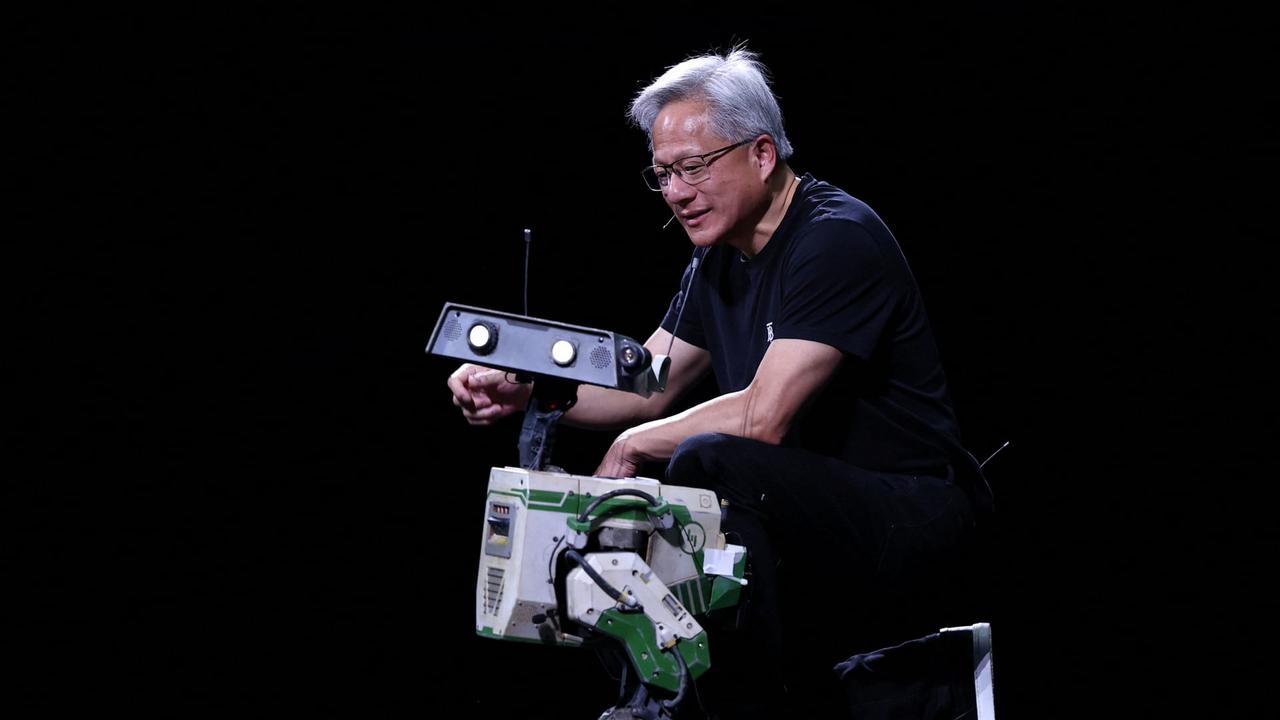
NVIDIA Unveils Jetson AGX Thor: A Powerful AI 'Brain' for Next-Generation Robotics
24 Aug 2025•Technology
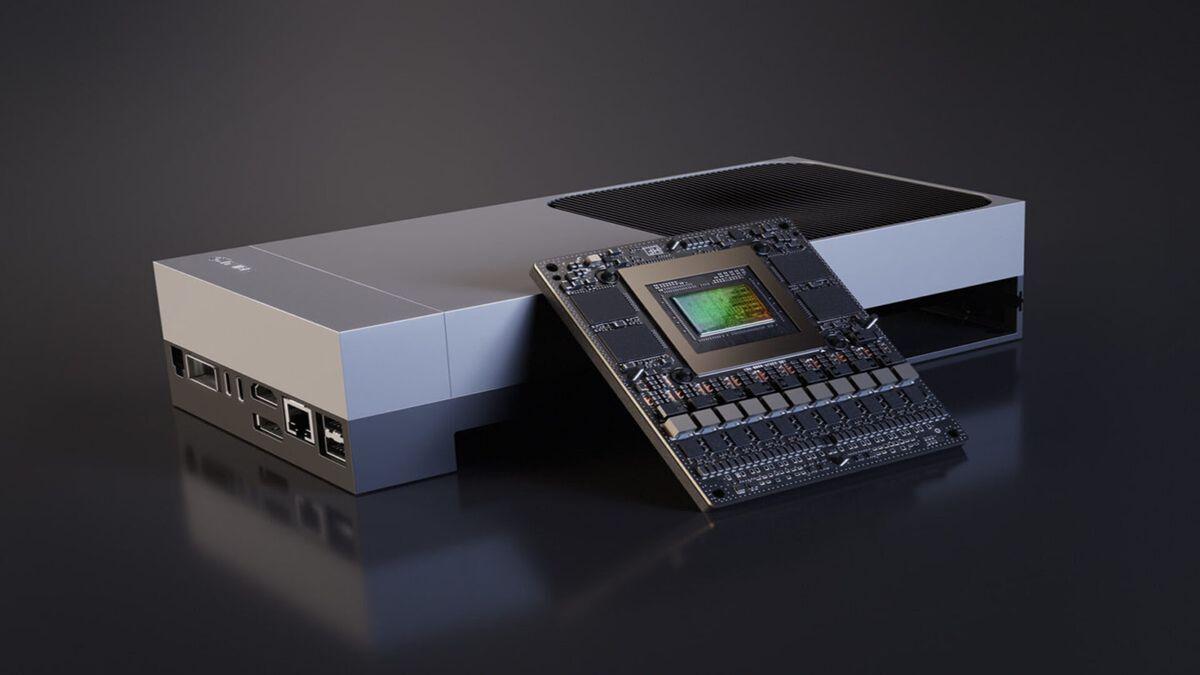
Recent Highlights
1
OpenAI releases GPT-5.2 AI model after code red memo targets Google's Gemini 3 threat
Technology

2
Disney invests $1 billion in OpenAI, licenses 200+ characters for Sora video generator
Technology

3
Disney accuses Google of massive copyright infringement through AI-generated character images
Policy and Regulation


